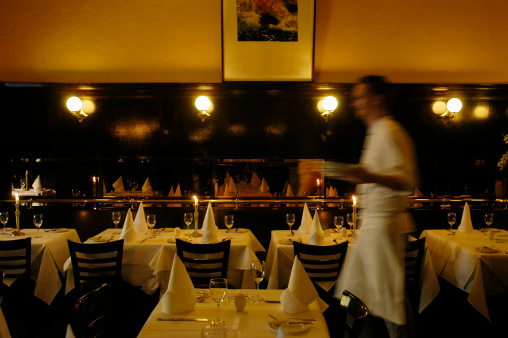Savor Authentic Eastern Food With a Pan-Asian Spin for a Culinary Adventure
Embarking on a cooking journey via genuine Asian food, improved with a Pan-Asian twist, uses a distinct chance to discover the rich tapestry of tastes that specify the region's varied cooking practices. As you ponder these luring dishes, take into consideration the social narratives and historical influences that shape them, each bite offering a story waiting to be found. pan asian restaurant Islamabad.

Discovering Pan-Asian Tastes
In the world of worldwide gastronomy, Pan-Asian cuisine stands out for its exceptional diversity and the unified interaction of tastes from numerous Asian cultures. This culinary method commemorates the distinct components and rich practices found throughout the continent, creating a tapestry of tastes that is both fascinating and gratifying. Secret to Pan-Asian cuisine is its capacity to balance different flavors-- pleasant, salty, spicy, and sour-- while highlighting the quality and high quality of each component.
From the umami-rich soy sauce of Japan to the intense chili peppers of Thailand, Pan-Asian cuisine offers a comprehensive palette of flavors. These components are often integrated in creative ways, enhancing recipes with layers of intricacy. For circumstances, making use of great smelling natural herbs such as lemongrass and cilantro, typical in Vietnamese and Thai cuisine, includes a revitalizing illumination to recipes, while the unification of coconut milk delivers a creamy, abundant structure.
The focus on fresh fruit and vegetables and aromatic flavors makes sure that each meal is not only a feast for the palate however additionally for the senses. Pan-Asian cuisine invites diners to start a culinary journey, discovering the vast and varied landscapes of Oriental gastronomy with every bite.
Combination Meals to Try
While Pan-Asian cuisine is celebrated for its traditional flavors, the modern-day cooking landscape is progressively embracing combination recipes that blend these traditional elements with impacts from various other regions. This ingenious technique not only honors the rich heritage of Oriental cooking arts but additionally presents novel taste experiences that interest modern palates.
An archetype of such a fusion dish is the Korean-Mexican taco, where marinaded bulgogi beef is wrapped in a cozy tortilla, topped with kimchi and a hot gochujang-infused salsa. This mix weds the strong, full-flavored tastes of Korea with the dynamic, fresh components of Mexican cuisine. Likewise, sushi burritos have gained appeal, joining together the delicate creativity of Japanese sushi with the passionate, hand-held comfort of a burrito, often including combination ingredients like tempura shrimp and avocado with a drizzle of wasabi mayo.
An additional notable recipe is Thai curry ramen, which instills the luscious, aromatic spices of Thai curry into the calming brew of traditional Japanese ramen, developing a harmonious blend that tantalizes the detects. These blend meals extend past simple uniqueness; they represent a cooking discussion between cultures, motivating exploration and development on the planet of Pan-Asian cuisine.
Essential Components and Spices
To truly appreciate Pan-Asian cuisine, one have to recognize the vital ingredients and spices that create its foundation. This diverse culinary style attracts from an abundant tapestry of Oriental customs, using a harmonious mix of textures and flavors.
Aromatic elements are pivotal, with lemongrass, ginger, and garlic being common across various Pan-Asian dishes. These ingredients provide a great smelling base that boosts the intricacy of flavors. Spices such as star anise, cardamom, and cinnamon introduce heat and character, resembling influences from regions like China and India.

Cooking Techniques and Tips
Grasping the art of Pan-Asian cuisine requires familiarity with its distinct food preparation techniques, each adding to the vivid tapestry of tastes this culinary tradition is celebrated for. Central to these methods is the stir-fry, a quick food preparation method that maintains the dietary honesty and dazzling shades of active ingredients. Making use of a wok, the stir-fry technique allows for even heat circulation, crucial for attaining the particular structure and taste balance of Pan-Asian recipes.
An additional essential technique is steaming, particularly prevalent in Chinese food. This gentle method maintains the natural flavors and find out here nutrients of components, making it optimal for fish and shellfish and veggies. Dumplings, a cherished staple, frequently profit from steaming, resulting in soft, delicious structures.
Barbecuing, additionally indispensable, passes on great smoky midsts to meals such as Oriental bulgogi or Japanese yakitori (Romantic restaurants Islamabad). This technique typically involves seasoning components, allowing tastes to pass through deeply prior to cooking over an open fire or warm plate
Finally, grasping the art of balancing flavors-- sweet, sour, salted, bitter, and umami-- is important. Effectively layering these components can boost a dish from regular to remarkable, using a complicated and satisfying culinary experience that embodies the significance of Pan-Asian food.
Dining Experiences Worldwide
Across the globe, Pan-Asian cuisine supplies an unrivaled eating experience, celebrated for its abundant tapestry of tastes and lively discussions. This culinary phenomenon has transcended social boundaries, catching the hearts and tastes buds of food lovers worldwide. In multicultural cities fresh York, London, and Sydney, Pan-Asian restaurants work as melting pots where cooking customs helpful resources from Thailand, Japan, China, and past assemble, supplying restaurants with an eclectic mix of recipes that highlight the region's variety.
The international charm of Pan-Asian food depends on its capacity to provide both credibility and development. Chefs masterfully marry standard ingredients such as lemongrass, soy sauce, and miso with contemporary methods, resulting in recipes that are both refreshingly new and familiar. This fusion permits restaurants to get started on a culinary trip that values heritage while embracing modernity.
In addition, dining experiences are elevated via thoughtfully made settings that show the ethos of Pan-Asian looks. From minimal Japanese-inspired interiors to dynamic Thai-themed areas, each dining establishment offers a distinct atmosphere that matches the culinary offerings. As an outcome, customers are not merely eating a meal but partaking in a cultural experience, making Pan-Asian dining an absolutely global sensation.
Final Thought
The exploration of Pan-Asian food uses a profound understanding of the detailed interaction of tastes and culinary customs across Asia. By welcoming combination meals such as Thai curry ramen and sushi burritos, the cooking trip not only highlights the versatility of conventional active ingredients yet also showcases ingenious modern-day strategies. This gastronomic journey, enhanced by cooking approaches and vital yak and yeti spices, supplies a special opportunity to appreciate the multiculturalism and culinary virtuosity that define Pan-Asian cuisine on an international range.
Getting started on a cooking journey through genuine Oriental food, improved with a Pan-Asian twist, provides a special chance to explore the rich tapestry of tastes that define the area's diverse cooking traditions.In the world of global gastronomy, Pan-Asian food stands out for its amazing variety and the unified interaction of flavors from different Eastern cultures. Secret to Pan-Asian cuisine is its capacity to balance contrasting flavors-- sweet, salty, spicy, and sour-- while highlighting the quality and top quality of each component.
